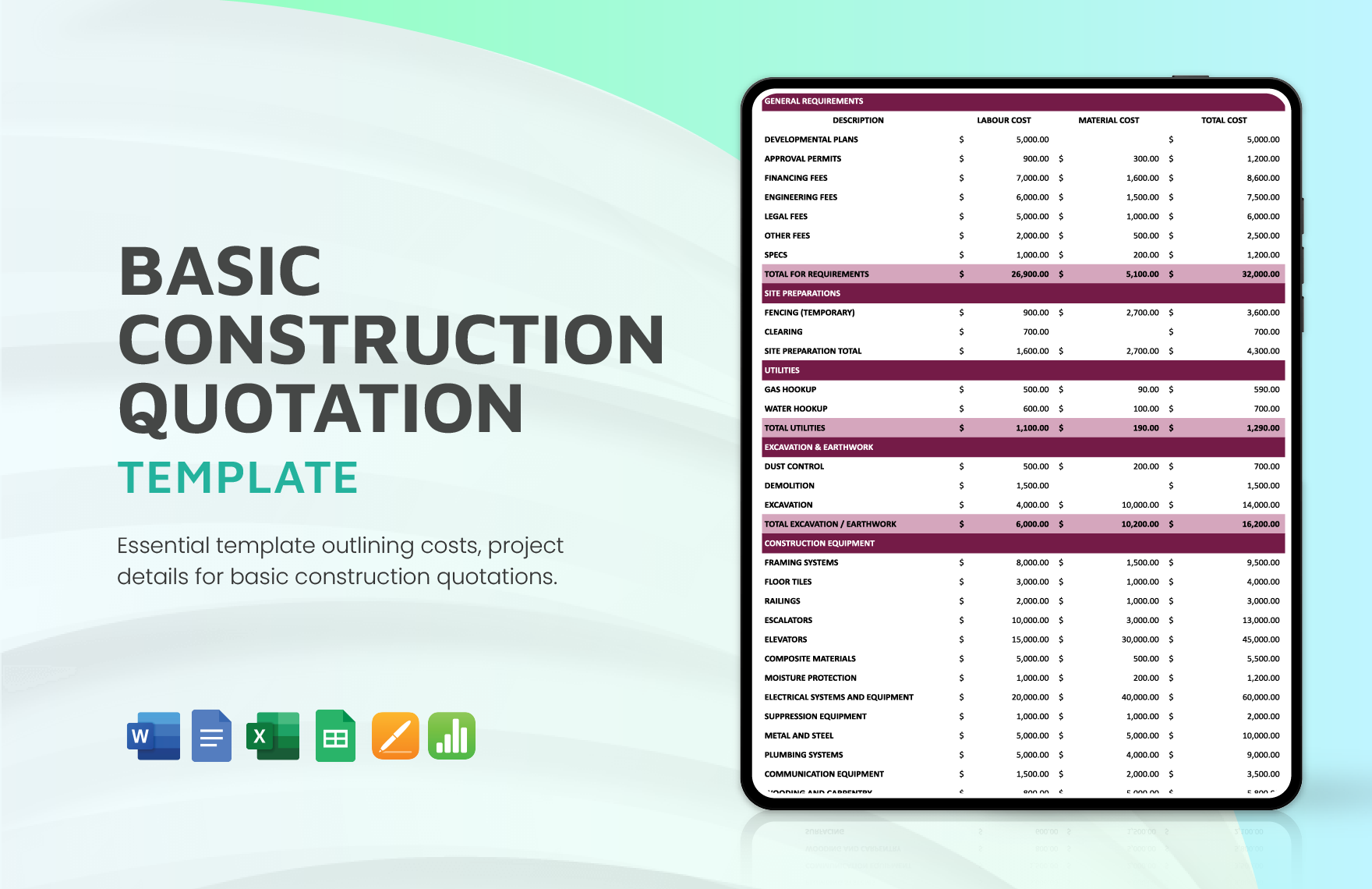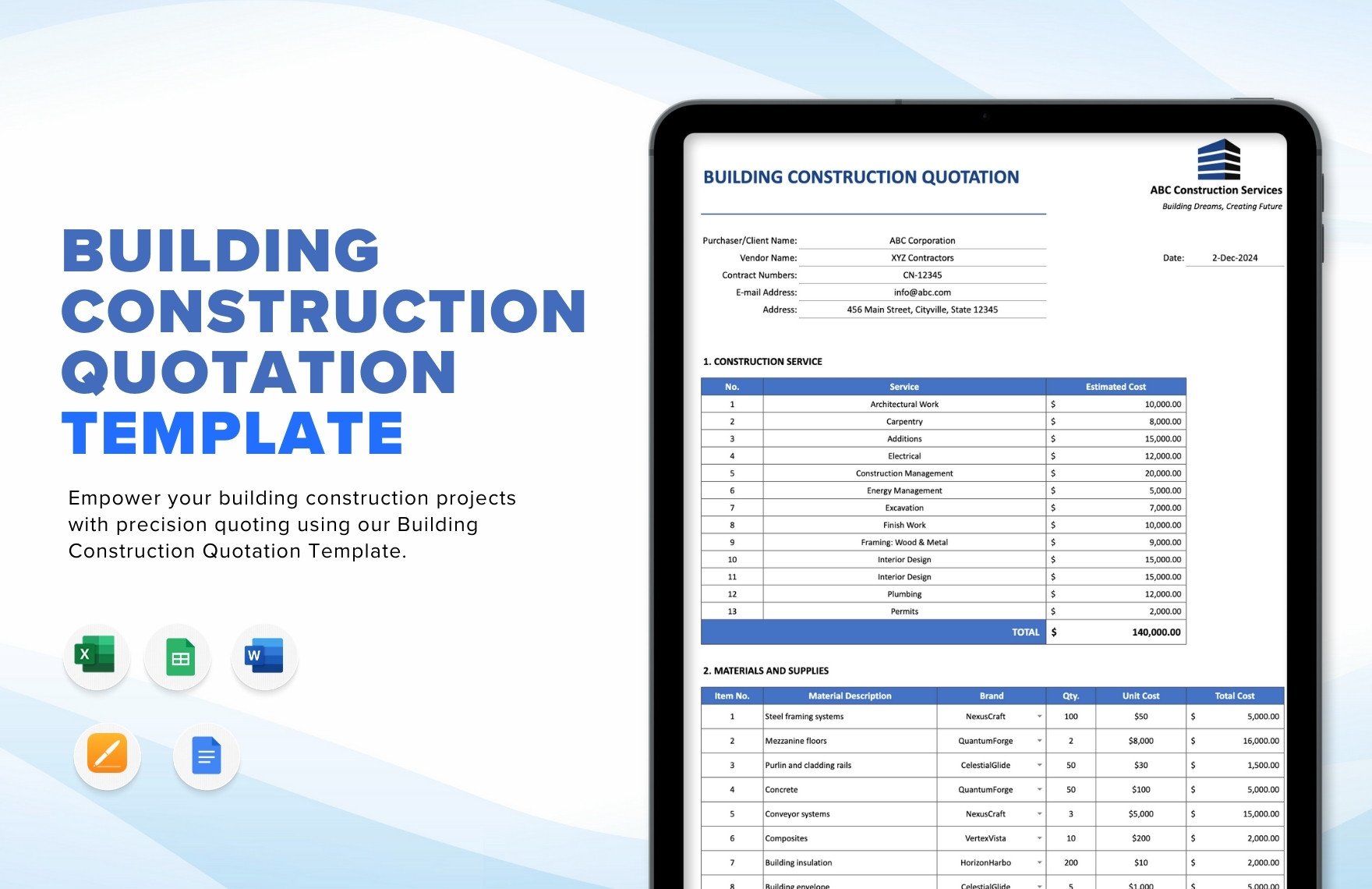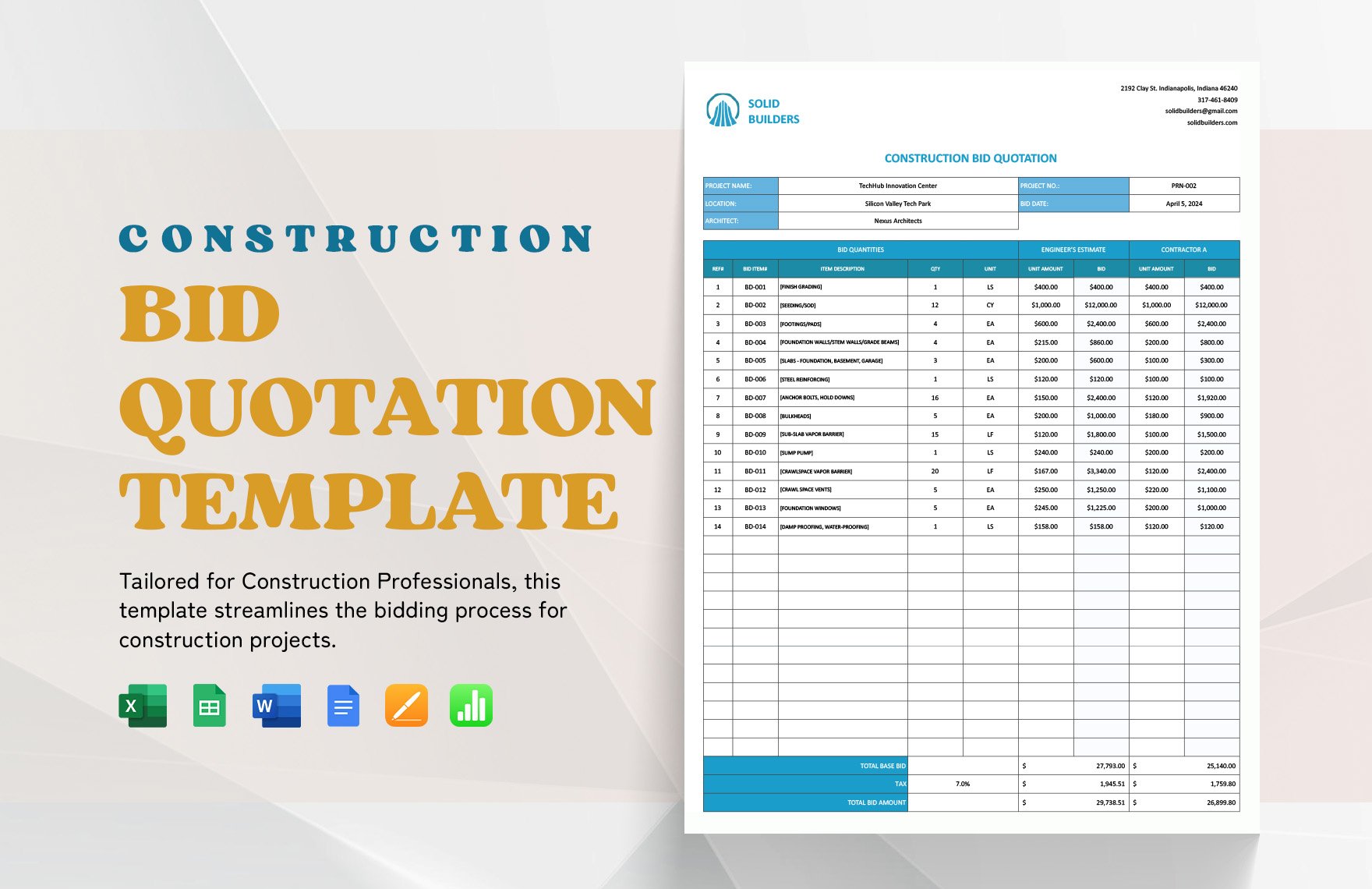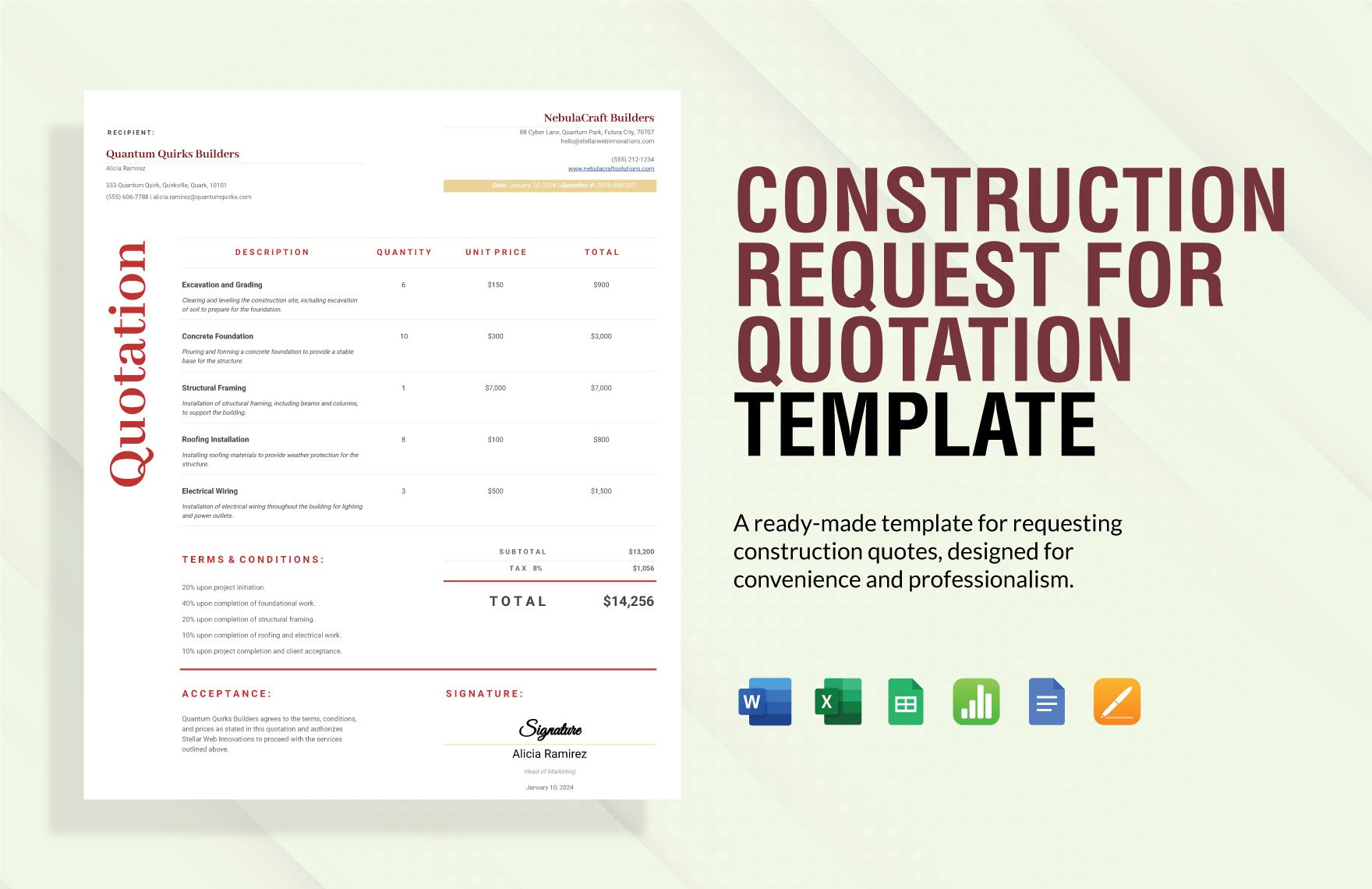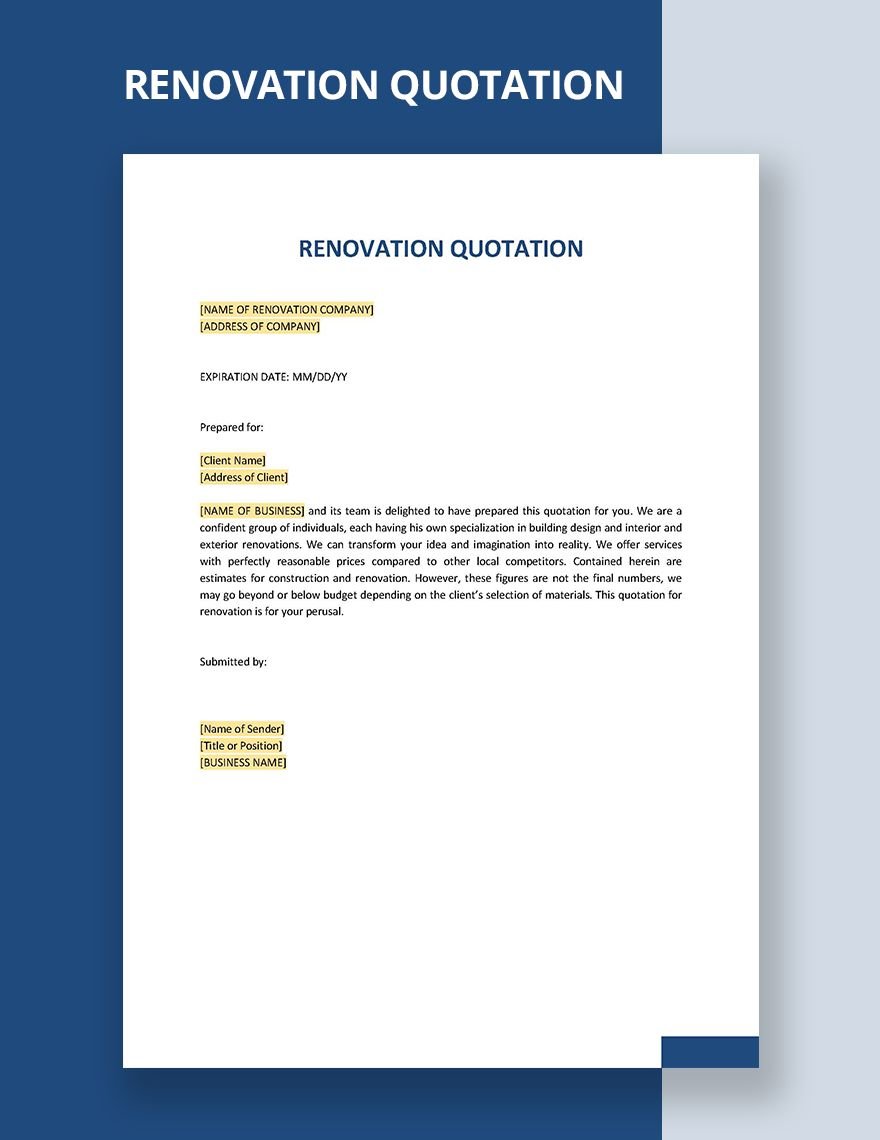Home construction and budget should bind together. Without the fund that can support the foundation, it could easily lead to further damages. Now, with a broken structure, will your clients get the satisfaction? Perhaps, they eventually won’t. And so as a construction company, you always want to make sure that your clients get a full view of what they will be paying for. All materials, labor, and service rates must be pen down in a single document. But don't worry. Explore our High-Quality Construction Quotation Templates in Google Docs. Print a copy in US Letter or A4 size. With the right material in hand, you can lend a piece of legal evidence to your client. Now, conveniently complete the price listing by downloading a template today!
Construction Quotation Templates in Google Docs
Explore professionally designed construction quotation templates in Google Docs. Free, customizable, and printable for a professional touch. Download now!



